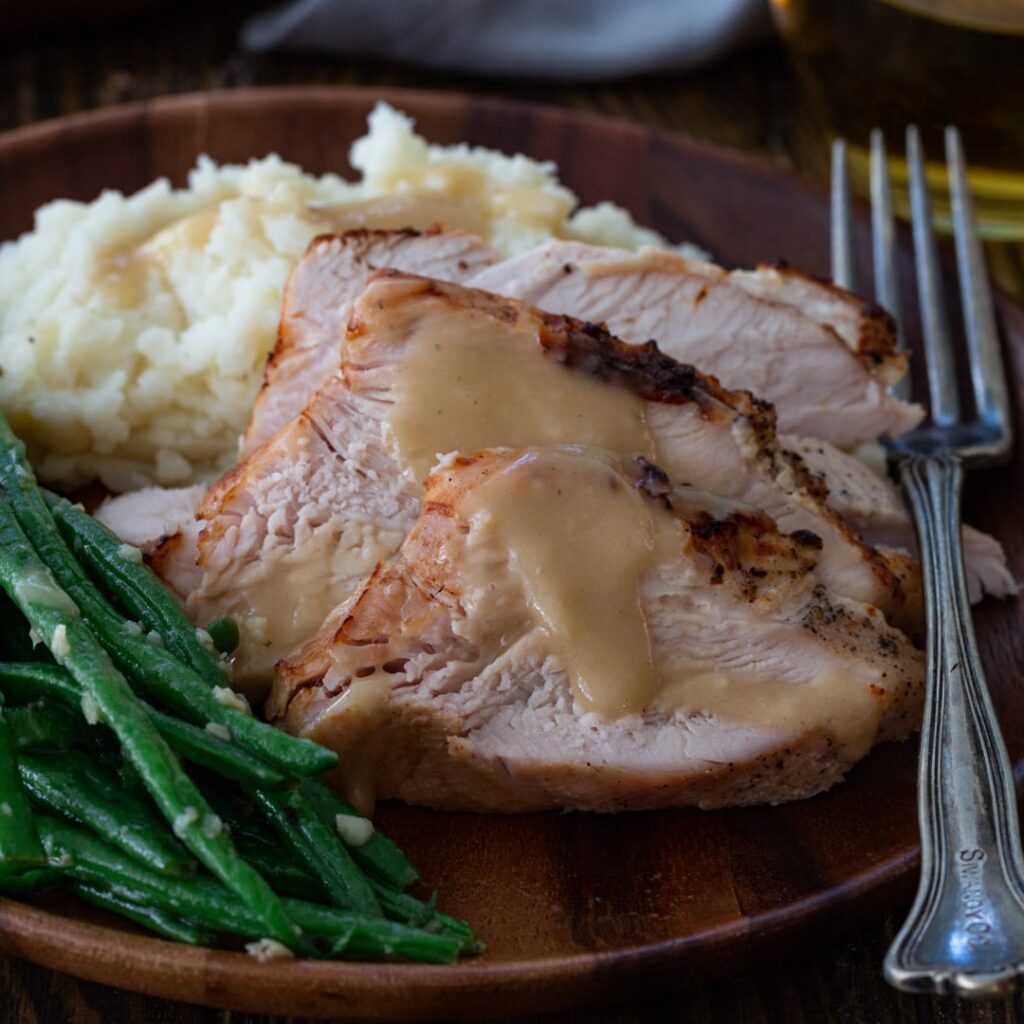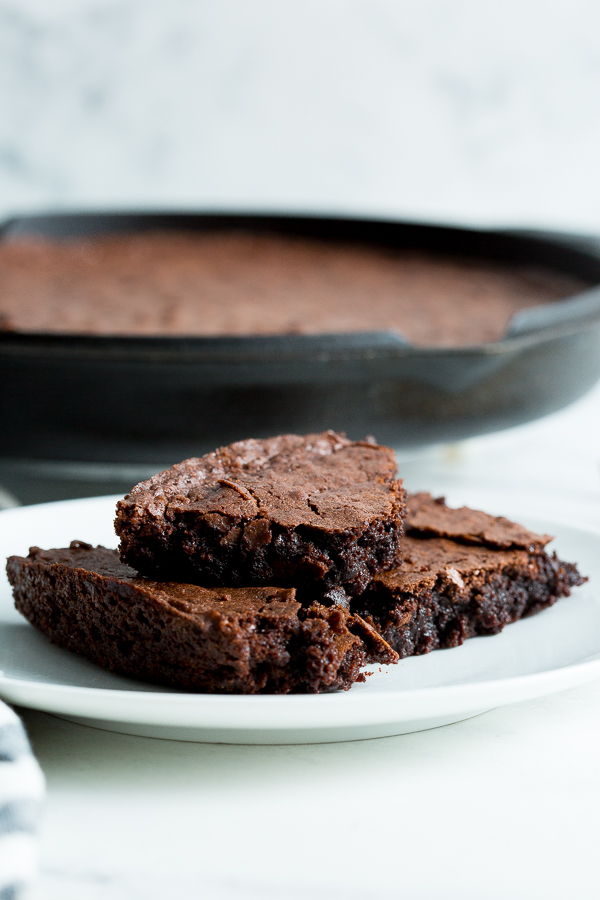The Best Jambalaya Recipe
The best Jambalaya recipe is packed with Creole flavors, delicious shrimp, succulent pork, tender chicken, and hearty rice—essentially everything you’ll find in your kitchen fridge and pantry. This one-pot meal is perfect for feeding a crowd, almost as big as New Orleans itself!
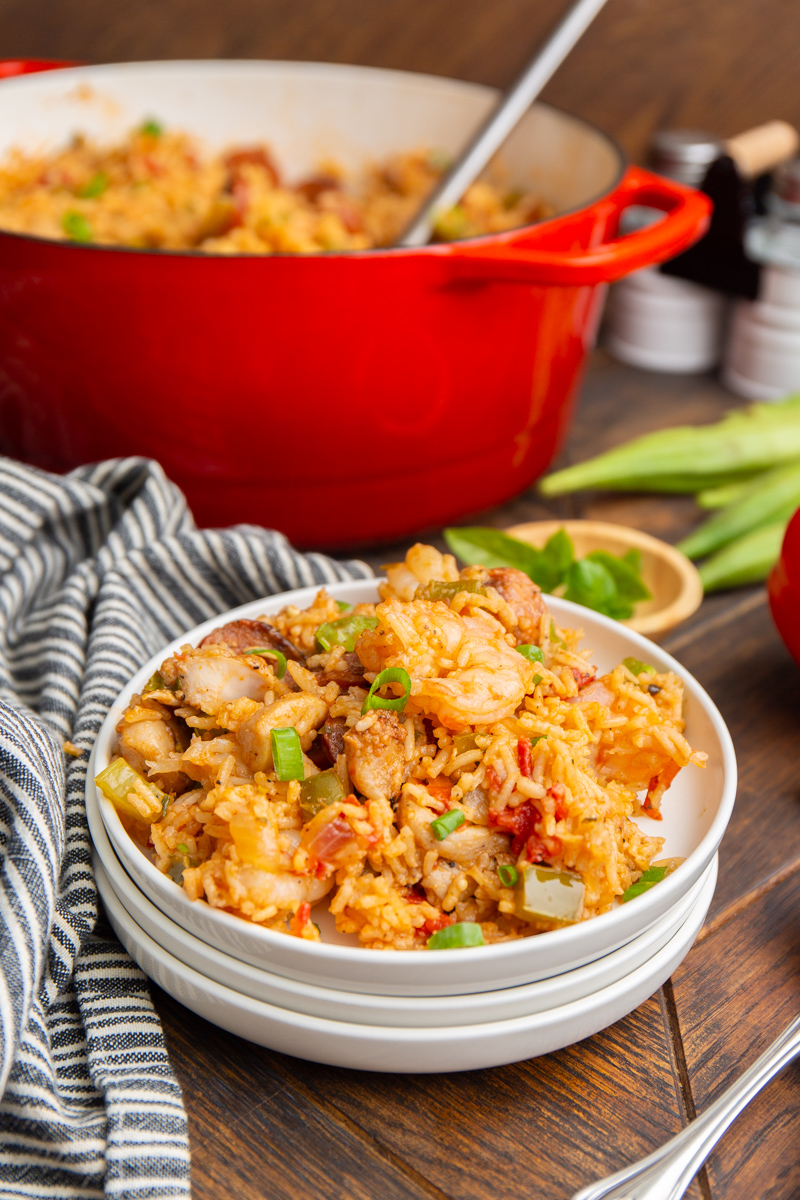
Why You’ll Love This Recipe
This southern classic comfort food is a robust and flavorful one-pot meal that can delight anyone, no matter where they hail from. The vibrant aromatics of onion, celery, bell pepper, and garlic create the perfect base. A medley of meats, spices, and a rich, tomato-based rice elevate the dish with layers of flavor, ensuring every bite is packed with comfort and satisfaction.
Is it Cajun or Creole Jambalaya?
This recipe is a Creole jambalaya. Cajun jambalaya tends to use different spices and typically excludes tomatoes. Both variations share similar meats and incorporate the “holy trinity” of vegetables: onions, celery, and bell peppers.
Authentic Jambalaya
When it comes to making authentic jambalaya, don’t stress over the specifics. Every family has its unique spin on this beloved dish, often with secret ingredients passed down through generations. In Louisiana, you’ll find that each household prepares it with their own twist, each claiming theirs is the truest version!
Ingredients
- Meats: Feel free to use one or a variety of meats, from chicken and pork to shrimp and crawfish. For some heat, consider andouille sausage, or choose milder varieties like plain sausage or kielbasa.
- Vegetables: Core ingredients include celery, bell pepper, garlic, and onion. Tomatoes and tomato paste will deepen the flavor and make for vibrant red rice. Optional but common, okra adds a Southern touch.
- Herbs & Spices: Creole seasoning is essential for flavor. Fresh herbs like basil, rosemary, oregano, thyme, and chives will brighten up your dish. Don’t forget bay leaves to round it all out!
- Rice: Long grain white rice is traditional—quick to cook and perfect at soaking up flavors. You could opt for whole grain or wild rice, noting it will impart a different taste.
- Other: Butter and oil are used to sear the meats and release savory flavors. Chicken stock helps to deglaze the pot and infuse the rice with maximum taste. Worcestershire sauce adds a delightful briny flavor that complements the seafood.
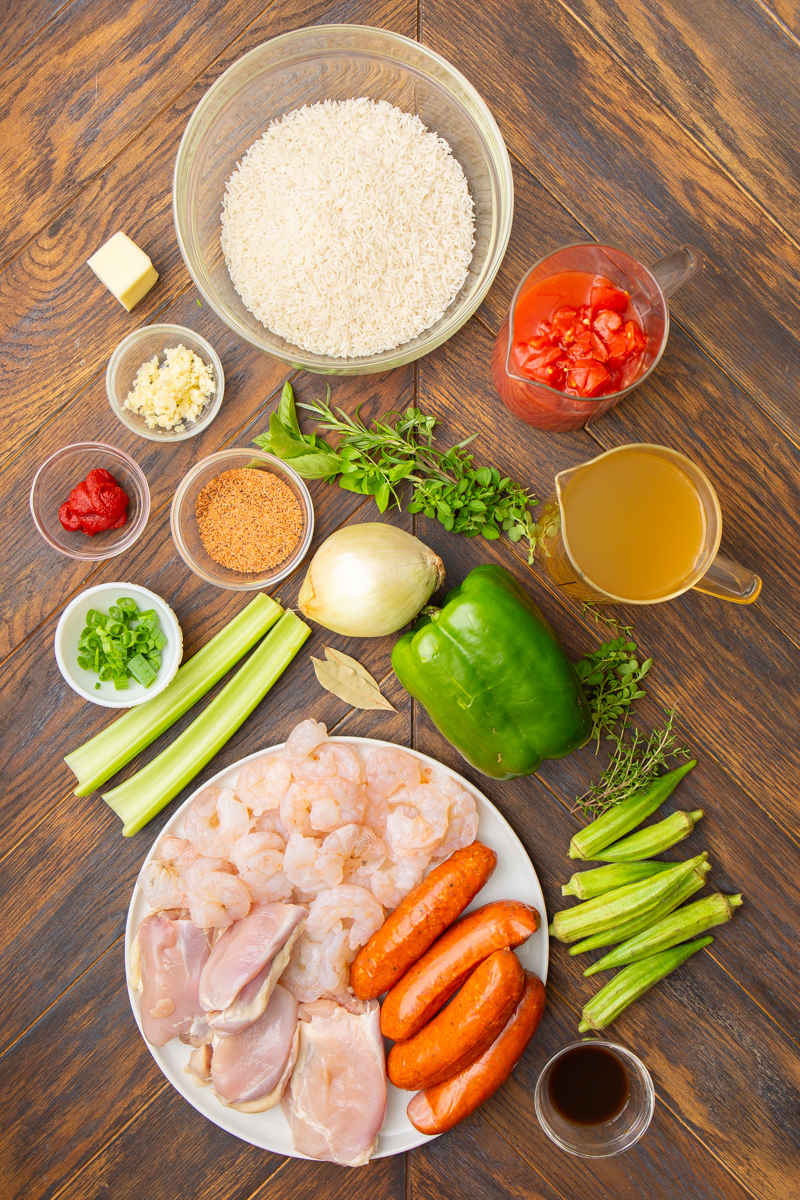
Jambalaya Spices
If you can’t find a pre-packaged Creole spice mix, no worries! You can create your own by mixing garlic powder, onion powder, paprika, thyme, oregano, basil, rosemary, bay leaves, cayenne, salt, and black pepper.
Instructions
- Begin by searing your pork in a large Dutch oven. No oil is necessary as the pork will release enough fat while cooking. While the pork is sautéing, coat bite-sized chicken thighs with half of your dry seasoning.
- After searing the pork, remove it using a slotted spoon. Add butter to the pot, then add the chicken pieces. Sear the chicken on all sides until golden brown.
- Once browned, again use a slotted spoon to take the chicken out, ensuring all the drippings remain in the pot.
- Add the onion, celery, and bell pepper, sautéing for about 5 minutes until tender and coated in the delicious drippings.
- Stir in the garlic, sautéing for an additional minute until fragrant.
- Introduce the tomato paste and seasonings, stirring well to coat all vegetables. Allow this to sauté for another 1-2 minutes.
- Rinse the rice well until clear, then add it to the pot. Stir so that the rice absorbs the red hue from the tomato paste and any moisture is depleted.
- Pour in the chicken stock and canned tomatoes, using a wooden spoon to loosen any stuck seasonings.
- Bring this mixture to a boil, then top it with fresh herbs and bay leaves.
- Finally, add the seared meat, raw shrimp, and okra. Cover and let it cook for 2 minutes before turning off the heat. Allow the jambalaya to sit covered for 20 minutes to finish cooking.
- Once the time is up, remove the cover, give it a good stir, and top with more fresh herbs before serving.
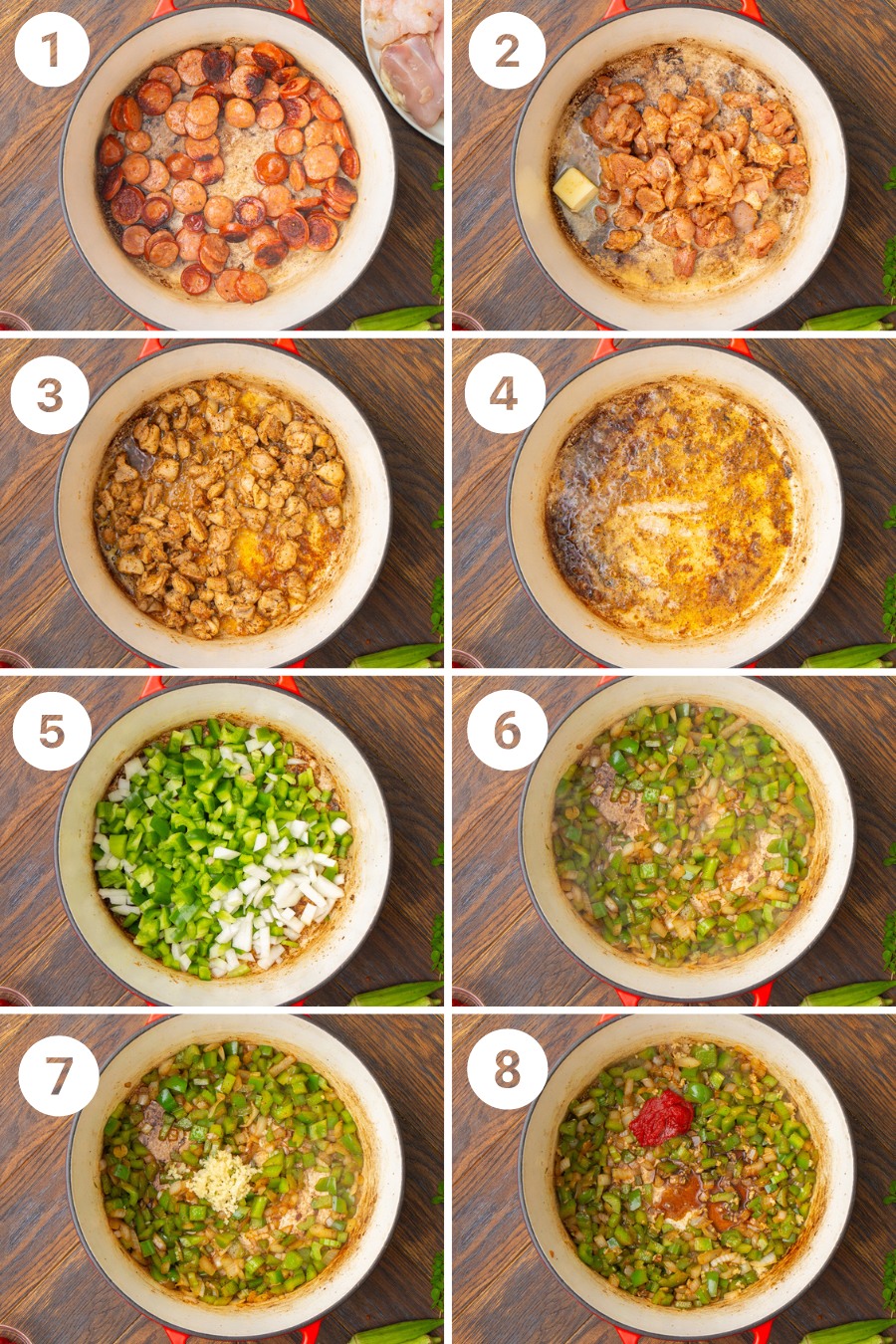
Equipment
- Large Dutch Oven
- Wooden Spoon
- Slotted Spoon
- Measuring Cups
FAQs
- What’s in gumbo vs jambalaya?
- Gumbo is a stew, whereas jambalaya is served more like a rice dish. Gumbo has more liquid and often requires thickening agents like flour, while the rice in jambalaya acts as a natural thickener, soaking up the flavorful liquid. Okra is essential in gumbo but optional in jambalaya.
- What is the origin of jambalaya?
- Jambalaya originated in Southern Louisiana, specifically within the European quarters of New Orleans in the 18th century. It represents a fusion of Spanish influence (attempting to create rice without saffron) and Caribbean spices brought over by immigrants.
- What kind of sausage is in jambalaya?
- For a kick, use chorizo or andouille sausage; these are traditional options. If you’re cooking for kids or prefer a milder flavor, consider kielbasa or smoked sausage links.
- Is it paella or jambalaya?
- Paella includes saffron and has a less spicy profile compared to jambalaya.
Katie’s Tips
- Begin by searing the sausage. The sausage rounds will release oil, which reduces the amount of additional oil needed for the dish. Sautéing the other ingredients in this spice oil enhances their flavor.
- Coat the raw chicken with half of the spices before searing to give them a chance to develop their flavor while cooking.
Storage
Store any leftovers in an airtight container in the refrigerator for up to 5 days. Reheat individual servings in the microwave or larger portions on the stovetop. You can also freeze leftovers in a vacuum-sealed container for up to 3 months. To thaw, place it in the refrigerator overnight and reheat as instructed.

